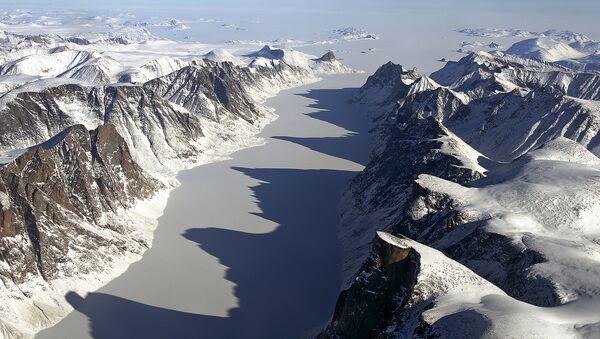A huge arch that reminds everyone of a pair of pants is located in an uninhabited area of the Brodeur Peninsula on the north end of Baffin Island, which is approximately 80-90 kilometers (49-55 miles) southwest of the community of Arctic Bay, according to CBC North. The Nunavut community of Arctic Bay has dubbed it “Qarlinngua,” which means “like pants” in Inuktitut. The formation is reachable only by boat when the summer sea ice is broken up enough to allow a person to get there.
Max Kalluk, the person who submitted the photo to CBC, said that he was around 12 years old, when he first saw the unique arch.
"Kind of makes you feel like small or humble, seeing something like that," he said. "And makes you appreciate and feel privileged that you get to see this."
When the tourism office was asked to verify the photo, it turned out that the employees were not aware of the bizarre rock’s very existence..
"My first reaction when I saw the photo was, 'No way, this is definitely Photoshopped.' I definitely thought it was fake," Sarah Demeester, an information counsellor with the Unikkaarvik Visitor Centre, confessed.
She also said that she had reached out to local sources and was able to confirm that the formation really exists.
"[It's] really just amazing. It kind of emphasized to me how remote we are in this part of the world up in Nunavut — the fact that something so amazing can exist… and hardly any people have laid their eyes on it in person."
According to four separate geologists from across Canada, who were asked to examine the Qarlinngua images, the scientific name for it is a sea arch, or a natural arch.
"I haven't seen anything like this in the Arctic, despite my widespread fieldwork," said John England, a professor emeritus at the University of Alberta's earth sciences department.
He proceeded to explain that due to “the unloading of the crust” by the ice sheets that melted away about 10,000 years ago most coastlines in the Arctic are still rising from the sea.
"So, in these areas," he said, "likely like where your photo was taken, the sea is now rising faster than the land, and if there's a lot of open water in the summer, the sea is eroding into a nearby cliff, whose coastline is slowly sinking."
While the chances of such rocks eroding are high, the one that’s still standing in the sea is likely to contain a lot of quartz, which makes it resistant to erosion, according to Linda Ham, chief geologist with the Canada-Nunavut Geoscience Office.
She estimated that the rocks in the Brodeur Peninsula area are Paleozoic rocks, which means they are about 250 to 600 million years old.
England also made a forecast, saying the collapse of Qarlinngua is a matter of decades, while other geologists who spoke to CBC News said it could take thousands of years.
Luckily, there is a tour company (the only one) that takes people to the extraordinary site. Gene O’Donnell, manager at Arctic Bay Adventures, shared that he had taken several groups of tourists to the rocks in the past three years, and the company plans to start advertising the tour on their website soon.
"It's like a monument to something. I'm not sure what it is," O'Donnell said. "I think it's something sacred."
The key issue is that there is a very limited time when the formation is accessible — last year it was just a week; the two years prior it was 13 days.




